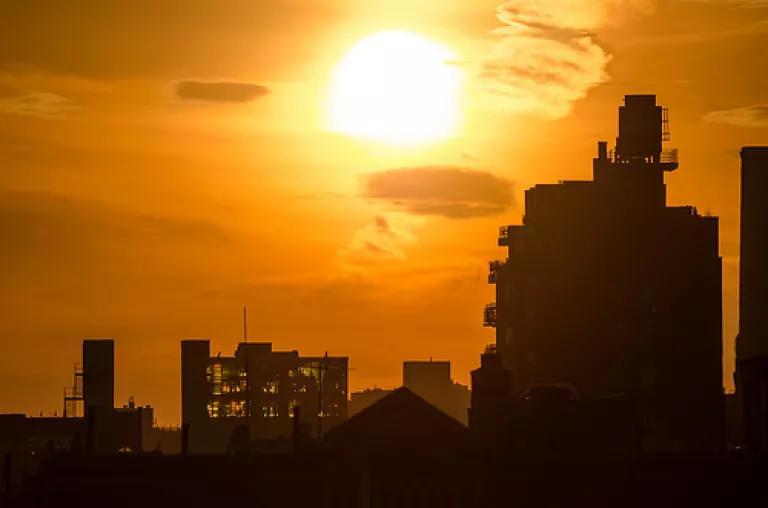The National Climate Assessment released its latest report today. It outlined the toll extreme weather is taking on our homes, businesses, and communities. But it also focused on a less obvious consequence of climate change: it threatens our health.
The report found that Americans are already experiencing respiratory illnesses, heart problems, and water-borne diseases as a result of climate change. And those hazards will only increase if we don’t take action now to reduce the carbon pollution that causes climate change.
Health experts are especially concerned about the impacts of rising temperatures. Extreme heat kills more Americans every year than hurricanes, tornadoes, and all other natural disasters combined, and now climate change is putting even more people at risk. The chances of experiencing an intensely hot summer rose from 1-in-300 (1951 through 1980) to 1-in-10 (1981 through 2010), according to a study in the Proceedings of the National Academy of Sciences.
The National Climate Assessment found that St. Louis, Philadelphia, Chicago, Cincinnati, and other cities have seen a dramatic increase in death rates and hospitalizations from heat waves. Hotter weather can trigger migraines, respiratory conditions, and heart and kidney problems. A study conducted by researchers at Columbia University and the Chinese Center for Disease Control and Prevention predicted that heat-related deaths in New York City could rise 20 percent by the 2020s.

Warmer temperatures also contribute to smog in the air, and breathing this pollution can inflame our lungs. Repeated inflammation over time can permanently scar lung tissue, even in low concentrations. The American Thoracic Society—the professional association of lung doctors—said climate change is especially dangerous for children and senior citizens because their lungs are more vulnerable to respiratory diseases caused by smog.
Climate change also increases the risk of floods. Flooding kills nearly 100 Americans every year, and that number is expected to grow as storms become more frequent and intense. Superstorm Sandy alone killed 117 people in the U.S. But the risks don’t end when the storm fades.
Intense downpours can overwhelm sewage treatment plants, releasing more pathogens into our drinking water. After Superstorm Sandy, at least 12 New Jersey communities urged residents to boil water before drinking it to prevent the spread of E. coli and similar gastrointestinal diseases. More than 750 cities and towns have older sewer systems that carry sewage and rain water in the same pipes. Heavy rains and flooding from climate change will lead to more incidents of untreated sewage flowing into our waterways.
It’s time to do more to protect our loved ones from harm. We can start by helping communities prepare for the health effects of climate change. More early warning systems and better tracking of illnesses, for instance, will allow us become more resilient in the face of extreme weather events.
But we must also address this crisis at its root cause: the pollution that causes climate change.
Power plants are the largest US source of this pollution, yet astonishingly they are free to dump as much carbon into our atmosphere as they want. This June, the Environmental Protection Agency will propose the first-ever national limits on carbon pollution from existing power plants.
According to NRDC’s analysis, the United States can reduce carbon pollution from power plants by 25 percent to 30 percent by 2020 using readily available, cost-effective technology. This would represent a major dent in carbon pollution—equivalent to removing as many as 130 million cars from the road. Click here to tell the EPA you support strong carbon limits to clean up our air and stabilize the climate.
By reducing dangerous carbon pollution now, we can help improve our health today and provide a healthier, more sustainable future for the next generation.
